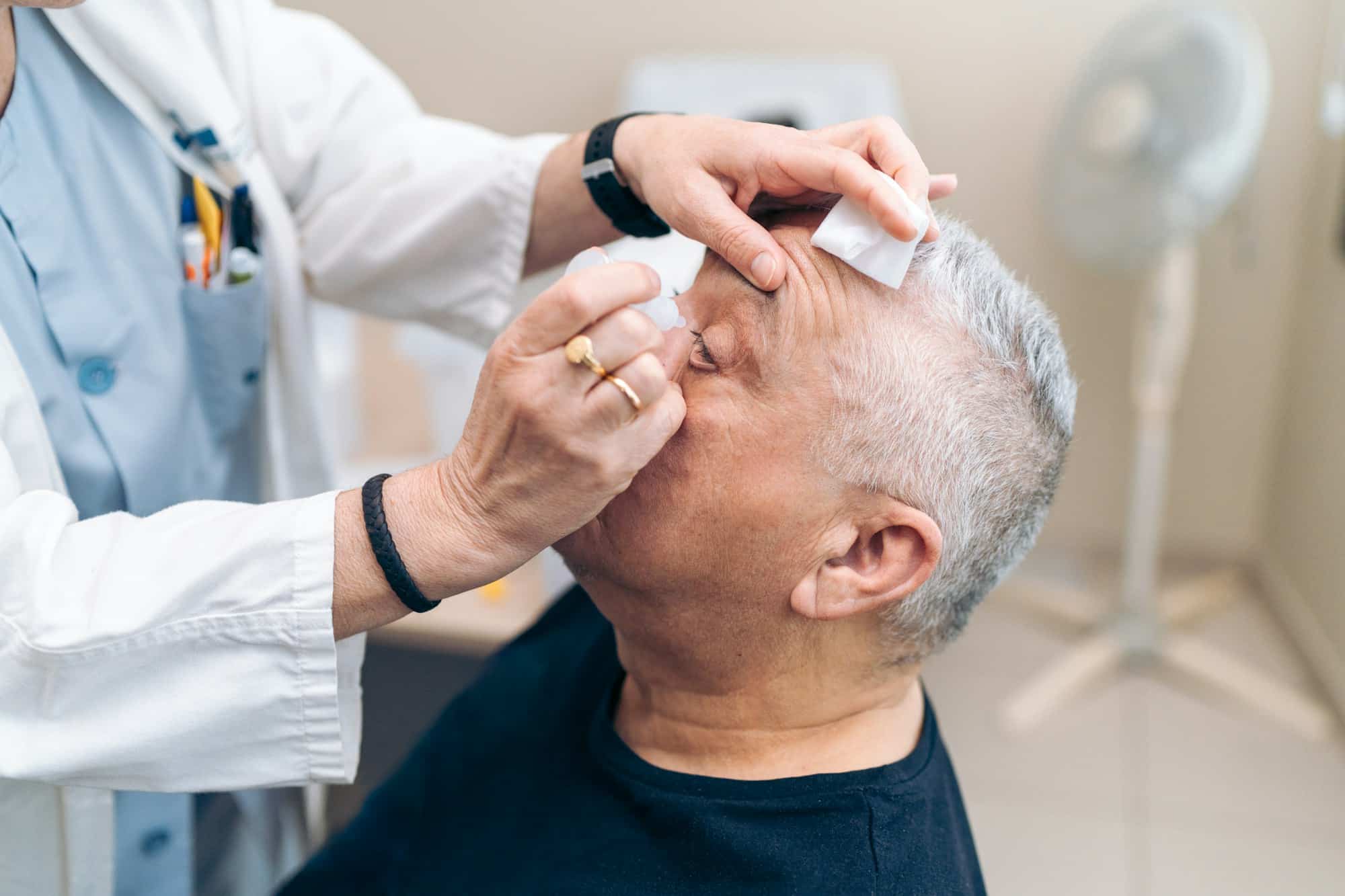How to Safely Administer Eye Drops to a Skittish Cat?

Do you have a feline friend who is a little on the nervous side? Does he or she squirm, hiss, or turn into a furball of fear the instant you approach with medication? If your kitty requires eye drops, you might be dreading the ordeal more than your pet is. However, with the right approach, you can administer these crucial aids with minimal stress for you and your cat.
Understanding Why Your Pet Needs Eye Drops
Before you can effectively administer eye drops to your cat, it’s important to understand why this form of treatment is necessary. Like humans, cats can suffer from a variety of eye conditions. These can range from simple eye infections to more serious disorders like glaucoma or cataracts, which may require surgery if left untreated. In some cases, your cat’s eyes might just be dry or irritated from dust or allergens.
Also to discover : How to Organize a Community Dog Walking Event?
Whatever the issue, ensuring your cat receives the appropriate medication is vital to their health and wellbeing. Eye drops are a common solution prescribed by veterinarians. They are designed to deliver medication directly to the affected area, providing quicker relief.
Your veterinarian will give you detailed instructions for administering the drops, including how often and how much to use. Make sure to follow these closely, as failure to do so could worsen your pet’s condition.
Also to read : What’s the Best Strategy for Introducing a New Dog to a Household with a Pet Bird?
Preparing to Administer Eye Drops
Once you understand why your pet needs eye drops, the next step involves preparing for the process. This involves creating a calm environment, positioning your cat, and preparing the medication.
First, choose a quiet, comfortable space in your home where your pet feels safe. Cats, being sensitive creatures, pick up on their owner’s emotions. If you’re nervous, they will be too. So, stay calm and composed.
Next, position your cat properly. A good technique is to gently wrap your cat in a towel, leaving only the head exposed. This not only keeps them stable and prevents them from scratching, but also gives them a sense of security. Make sure the cat’s head is slightly tilted back to make it easier to administer the drops.
Finally, prepare the medication. Make sure the eye drops are at room temperature and shake the bottle gently if necessary. Do not touch the tip of the dropper to avoid contamination.
A Step-by-Step Guide to Administering Eye Drops
Now that you’re prepared, here’s a helpful step-by-step guide to applying the eye drops.
- Hold your cat’s head gently but firmly. Ensure the head is slightly tilted back.
- Using your other hand, open the bottle of eye drops.
- Hold the bottle above your pet’s eye, ensuring you don’t touch the eye with the dropper.
- Squeeze the prescribed number of drops into each eye, aiming for the corner of the eye.
- Release your cat and allow them to blink the drops into their eyes.
This may seem simple, but remember, dealing with a skittish cat can add a level of complication. Stay patient and calm. If your cat struggles excessively, take a break and try again later. It’s better not to force the issue and potentially cause harm or additional stress.
After Care: Monitoring Your Cat’s Eye Health
Administering the eye drops is only part of the process. Ongoing monitoring and care is equally important. Make sure to observe your cat’s behavior after the treatment. If you notice any changes in their eating habits or if they seem excessively lethargic, it could be a sign of a negative reaction to the medication.
Also, look for any changes in your cat’s eyes. If the condition doesn’t improve or if it worsens, immediately contact your veterinarian.
While this process might seem daunting, it’s important for your pet’s health. Remember, you are not alone in this. Reach out to your vet for advice or help if you’re struggling. They can provide additional tips or even demonstrate the correct way to administer the drops.
The Role of Positive Reinforcement
Finally, it’s important to end the process on a positive note. Cats respond well to positive reinforcement. After you’ve administered the drops, reward your pet with a treat, some cuddle time, or their favorite toy. This will not only help them associate the experience with something positive, but also build trust between you and your pet.
Administering eye drops to a skittish cat can be challenging, but with patience, preparation, and a lot of love, it’s entirely doable. Remember, your cat relies on you for its care and wellbeing, and with the right approach, you can ensure that they get the treatment they need with minimal stress.
Recognizing Signs of Eye Problems in Cats
Noticing that your cat’s eye health may be compromised can often be a challenging task, as our feline friends can be very good at hiding signs of discomfort or illness. However, with careful observation, you can spot certain signs that might indicate a problem.
Some of the common symptoms to look out for include frequent blinking, squinting, or rubbing of the eye. You might also notice redness, swelling, or discharge. Changes in the eye’s color, cloudiness, or visible third eyelid are also indicators of potential eye problems. In severe cases, the cat might show signs of distress such as loss of appetite or reluctance to play.
It’s necessary to immediately consult your veterinarian if you observe any of these symptoms. They could be indicative of a range of eye infections or other conditions such as cataracts or glaucoma that might necessitate cataract surgery. Your vet might prescribe eye drops as part of the treatment.
Eye injuries can be painful, and your cat might be understandably skittish when it comes to administering eye medication. Therefore, equipping yourself with the right technique is essential to ensure the drops are applied effectively and with minimum distress to your pet.
Managing Potential Challenges: Tips and Tricks
Administering eye drops to skittish cats can present its own set of challenges. Cats have a keen sense of their environment and can become nervous, especially when it comes to things like holding their eye open. However, with a calm approach, patience, and a few helpful tips, you can make the process smoother for both you and your cat.
Use your dominant hand to administer the drops – this will give you more control and precision. When holding the bottle, make sure it’s high enough so that the drops fall gently into the cat’s eye. You can use your other hand to gently hold your cat’s head.
If your cat is overly anxious, it could be helpful to have a second person assist you. One can hold the cat, while the other applies the drops.
You could also consult with forums for cat owners or online resources for more tips. Additionally, you can reach out to your vet or pet insurance company for advice. They may be able to provide specific suggestions based on your cat’s temperament and health condition.
Lastly, consider having a routine for administering the drops. Cats are creatures of habit, and if you can establish a regular pattern, it could make the process easier over time.
Conclusion: Nurturing Your Cat’s Eye Health
Administering eye drops to a skittish cat can feel daunting, but with the right approach and technique, you can ensure your pet receives the much-needed treatment. Understanding the importance of eye health, recognizing signs of problems, and being prepared to administer medication are crucial aspects of caring for your cat.
Don’t forget to monitor your cat’s behavior and eye condition post-treatment. If you notice any worsening symptoms or adverse reactions, reach out to your vet promptly. On the other hand, improvements in your pet’s condition are a testament to your efforts and patience.
Remember, in situations like these, your pet relies on you. With patience, love, and the right know-how, you can help your cat maintain good eye health and overall wellbeing.
